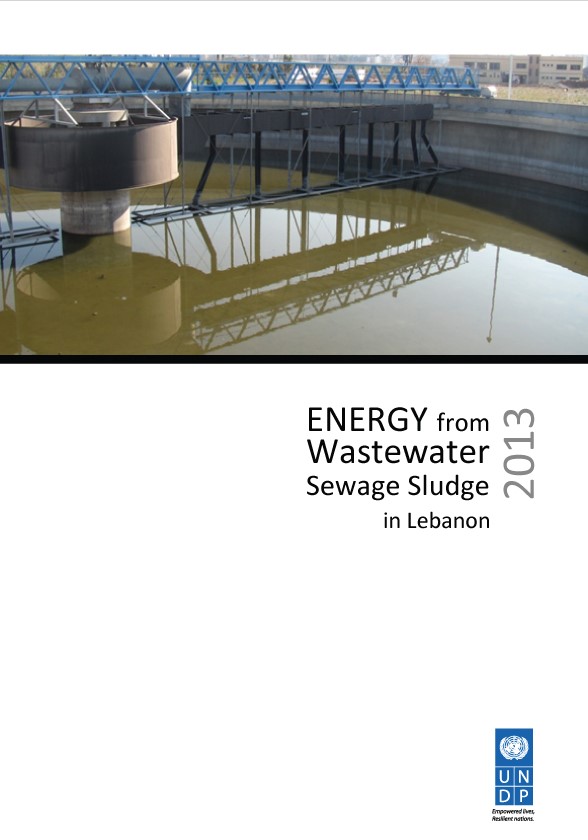Energy from Wastewater Sewage Sludge in Lebanon; ‘Transforming a Waste Disposal Problem into an Opportunity'
 |
rapport Feb 2013 ; 92 pages
Ed. UNDP - Beirut
Téléchargeable sous format: PdF
Abstract:
The Ministry of Energy and Water (MEW) and the Council for Development and Reconstruction (CDR) are considering investing in energy produced from wastewater sludge through anaerobic digestion (AD). Currently, Lebanon either has only a few constructed wastewater treatment plants (WWTPs), however many others are under construction, under design phase assessment, or are envisioned to be assessed in the future. The goal of this study is to undergo a feasibility assessment to identify the WWTPs that meet the conditions to implement AD and elaborate the related technical specifications. None of the WWTPs are operating at this moment. The reality of the sector is that most of the plants that are constructed have yet to be connected to a sewage network, whereas in other cases, the WWTPs have yet to be constructed. Therefore the scope of the study has been redefined to be as follows:
• To recommend prescriptions for future projects;
• To identify WWTPs where AD is conceivable;
• To define and develop sludge AD and codigestion scenarios based on the co- substrates identified during the National Bioenergy Strategy Study;
• To assess the economics involved in selected options. The report is divided into the following chapters with related description:
• Chapter 1 indicates the methodology used for this study.
• Chapter 2 provides an overview of the different wastewater treatment processes to understand the consequences on sludge quality, energy production and energy consumption.
• Chapter 3 summarizes all the information gathered during the WWTPs data collection as well as their current status.
• Chapter 4 exposes the technology allowing to boost the energy production of a sludge AD and provides the main technical specifications for the dimensioning and the operation of an anaerobic co-digestion plant.
• Chapter 5 presents the guidelines for each future WWTP project, summarized below:
-- For large-scale plants (>200,000 Population Equivalent (PE)), each time a primary treatment is planned, anaerobic digestion with energy valorization must be studied. The possibility to oversize digestion and sludge dewatering to treat additional products (sludge from small plants, industrial and agricultural organic residues) must be evaluated.
-- For medium-scale plants (from 100,000 to 200,000 PE) a solution with primary treatment must be studied to evaluate the economic viability of onsite digestion with energy generation.
-- For small-scale plants, a larger nearby WWTP with onsite digestion must be identified to find a destination for the sludge and improve biogas production.
• Chapter 6 considers select projects for possible implementation. Considering the information gathered, the study identified WWTPs that meet the conditions to implement sludge AD. To increase the renewable energy production of these WWTPs, six co-digestion scenarios with local co-substrates and sludge produced in other nearby WWTPs, have been elaborated. Additionally and based on the Bioenergy Strategy For Lebanon published by CEDRO (2012), co-substrates, such as manure, agricultural residues and agro food industries coproducts, have been selected according to the regional production, the estimated availability and allowing the required balanced mixture.
Mots clefs: |
eaux usées (réutilisation) (CI) (DT) (OP) (ope) , énergie (CI) (DT) (OP) (ope) |
Pays concerné: |
Editeur/Diffuseur: |
|
UNDP
-
United Nations Development Programme - Beirut - Liban |
En cas de lien brisé, nous le mentionner à communication@pseau.org